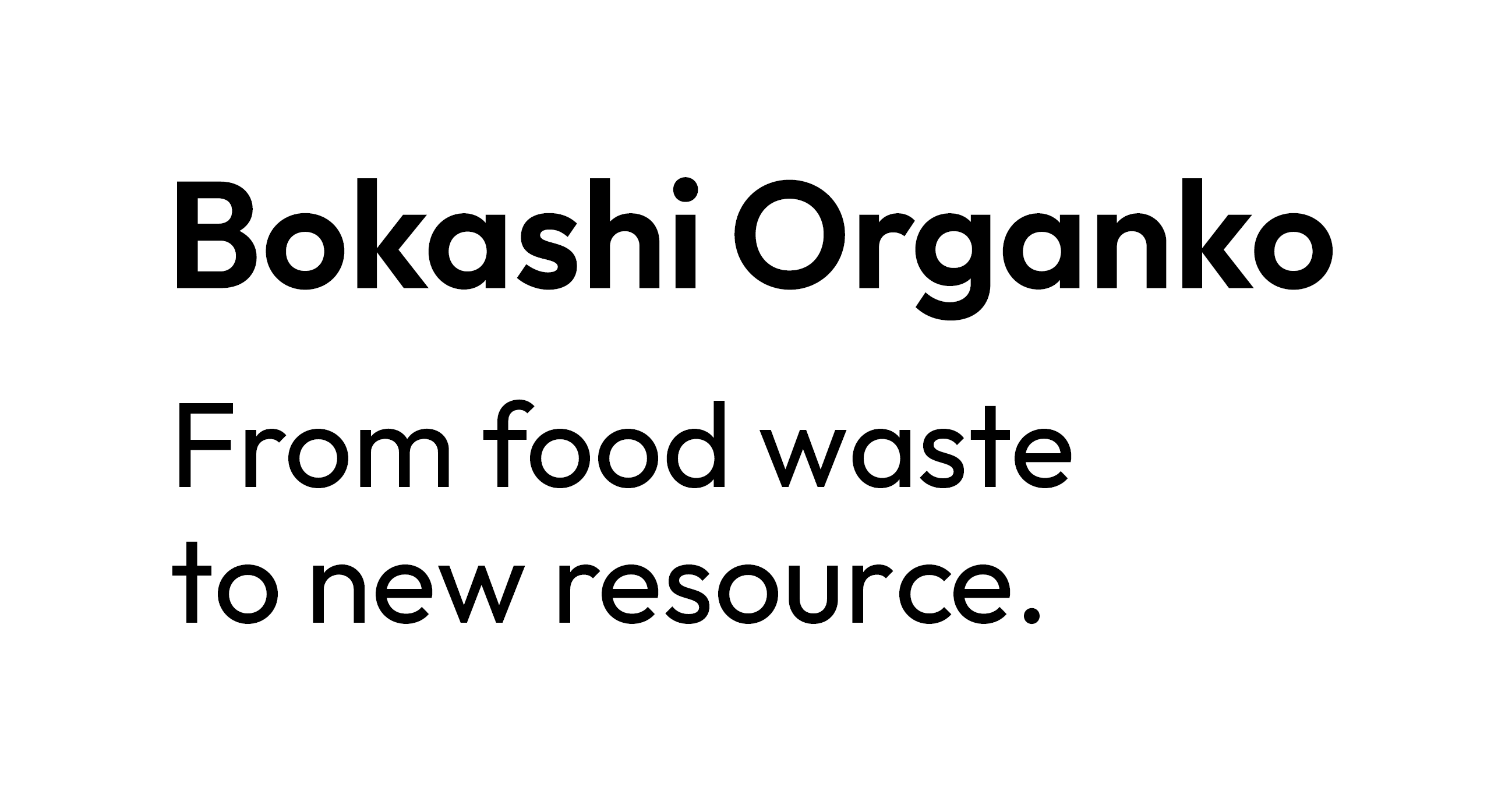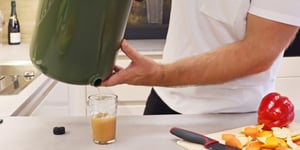Bokashi composting is one of the best and most popular composting methods. It relies on specific factors, such as airtightness and the presence of the right kind of EM for the fermentation process to take place. As such, it must use an airtight container (i.e. Bokashi composter). Thus, this type of organic waste management is the most suitable option for indoor composting. And while you can read more details about Bokashi composting in our past articles, we will devote our attention to Bokashi liquid herein.
Are you already using Bokashi composting and just looking to gain more information about its side product - the Bokashi liquid or Bokashi juice? Are you perhaps in search of arguments to help you decide whether or not you should start composting using this method? Or are you just interested in learning more details about Bokashi liquid, perhaps about Bokashi juice storage in particular? Whichever the case, you definitely came to the right place.
In the following sections, we will cover the basics of Bokashi liquid. You will learn what it is, what it contains, how often is it produced, how to use it, and more. Moreover, since we receive a lot of questions asking how to store Bokashi liquid, we will devote some extra attention to the Bokashi juice storage method.
Without any further ado, let’s dive right in.
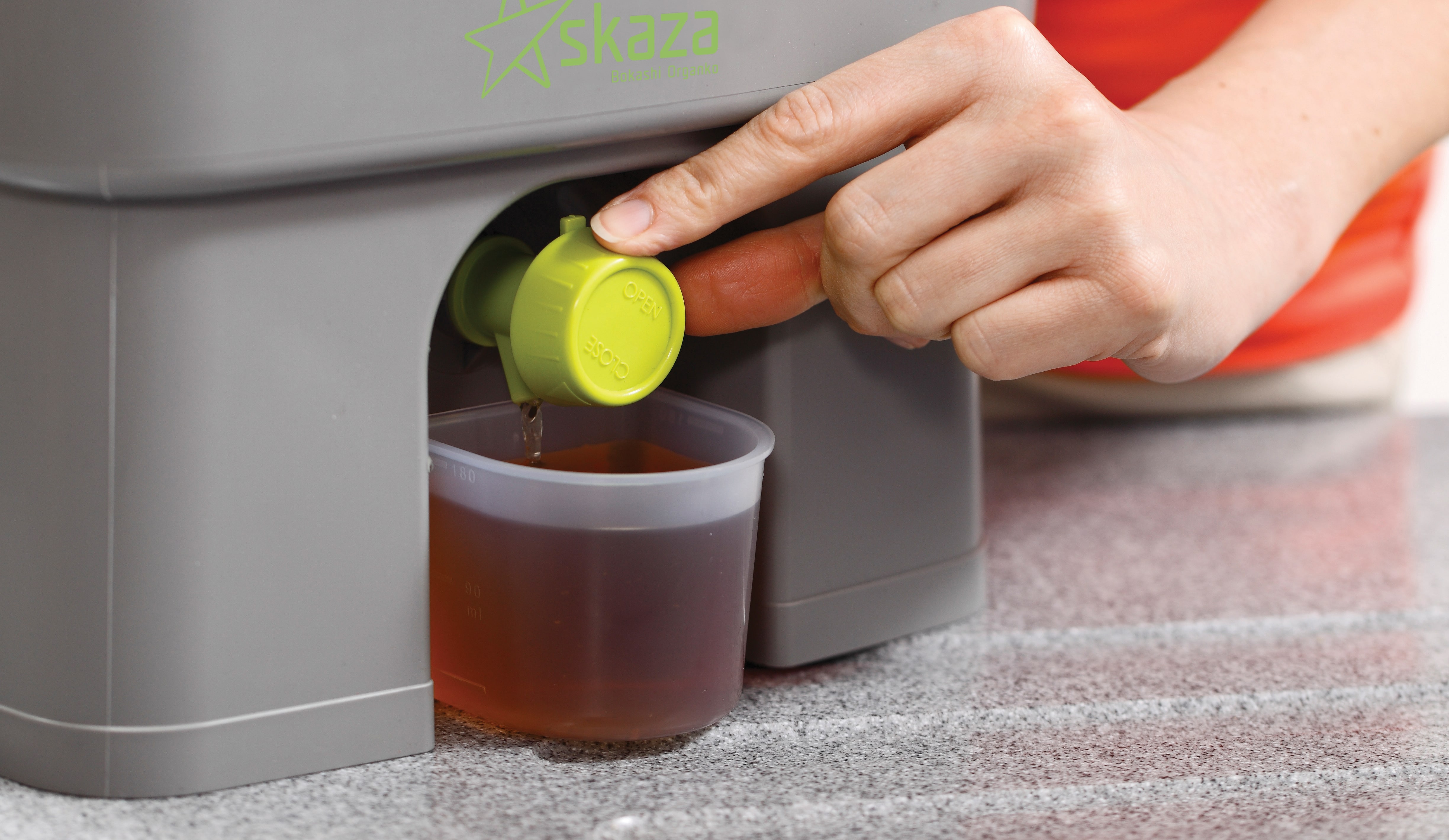
What is Bokashi Liquid?
Bokashi liquid, also known as Bokashi juice, is a side product that forms during the fermentation process of organic material inside a Bokashi composter. This liquid is full of nutrients but it is also very concentrated and highly acidic. Moreover, it is microbiologically highly rich.
Thanks to gravity, the liquid accumulates at the bottom of the Bokashi composter. As such, a properly designed bin may offer easy access to that precious liquid. In case you want more information about what Bokashi liquid is, make sure to check out this particular past article.
How to Use Bokashi Liquid
The exact steps of how to use Bokashi liquid vary depending on the purpose of its use. While there are several ways to use this precious juice, using it as a fertilizer and drain cleaner is what we focus on.
When using Bokashi liquid as a drain cleaner (a.k.a. Bokashi juice drain cleaner), you do not dilute it. Using any type of container, you simply pour Bokashi liquid into any of your bathroom or kitchen drains; you may even pour it into your toilet. The liquid will then start to do its thing - it will decompose the accumulated washing powders, toilet paper, and other material potentially clogging the drain. Moreover, it will prevent the future accumulation of grease in your pipes.
On the other hand, if you want to use Bokashi liquid to fertilize plants, you need to dilute it first. Once diluted, you simply water your plants with it.
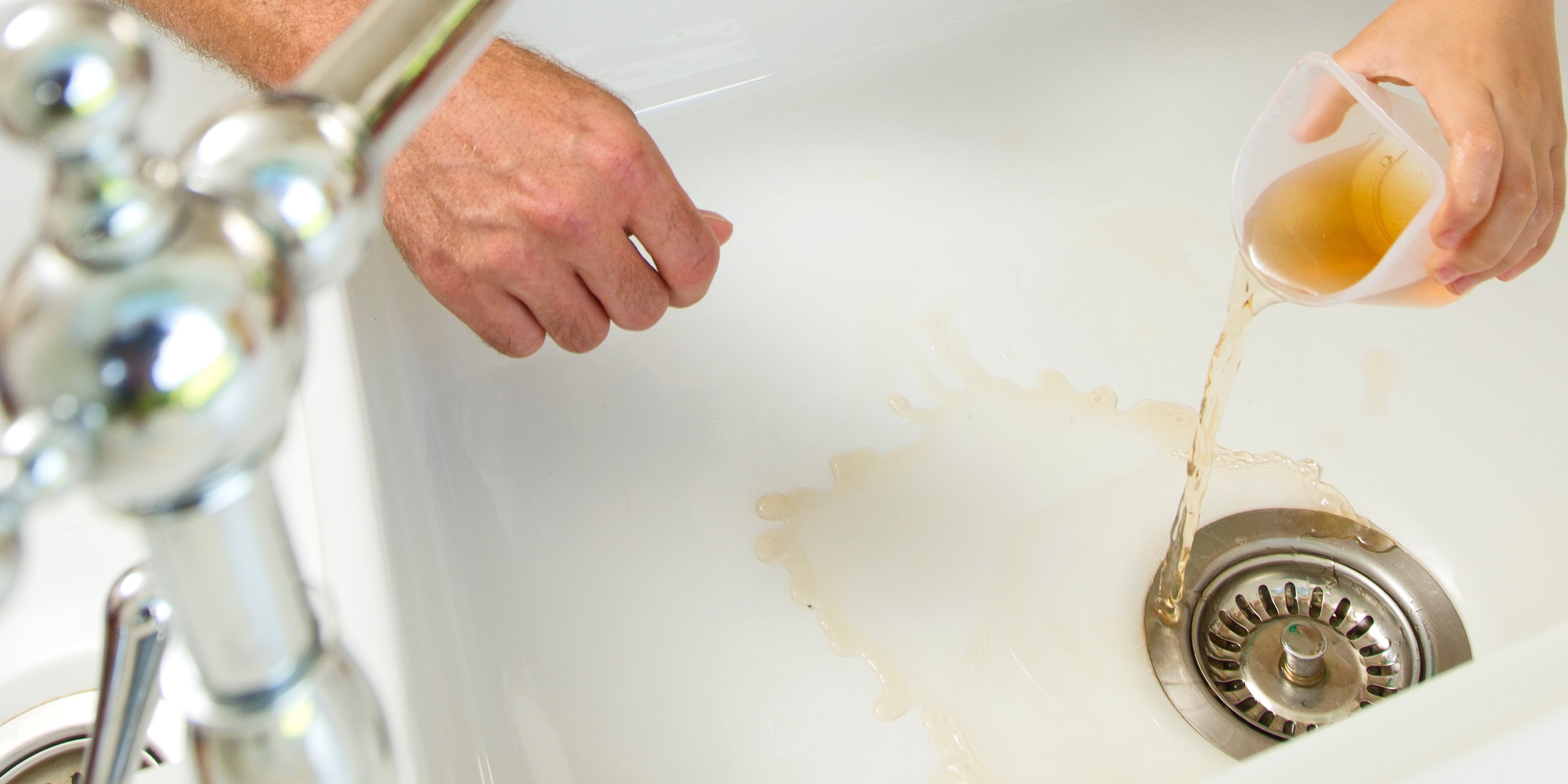
Bokashi Liquid Dilution
The details of Bokashi liquid dilution depend on the frequency of watering. A good guideline is to go with a 1:100 ratio (Bokashi liquid : water) if you water your plants once per week or less frequently, and a 1:200 ratio if your watering frequency is more than once per week.
What does Bokashi Liquid Contain?
As mentioned above, Bokashi liquid is microbiologically rich. This means it contains many antioxidants, enzymes, and natural antibiotics, all of which can feed your plants. Without going into further details, it is safe to say that a properly diluted Bokashi juice provides your plants with all the essential nutrients required for them to thrive. The best thing about the fertilizing liquid obtained by diluting Bokashi liquid is that it may be used for plants on the garden beams as well as all potted plants.
The Amount of Bokashi Liquid Produced
There are many factors that determine the amount of Bokashi liquid produced during the fermentation process. Of course, the most influential aspect is the type of organic waste and its quantity placed in the bin. If the material is very dry, there will be very little liquid produced. On the other hand, if the organic waste contains more water, you can expect more liquid. You can also expect to get slightly more of the Bokashi juice in case the biowaste is in smaller pieces (for more details check out our “Does the fermentation process differ regarding the size of bio-waste?” article.
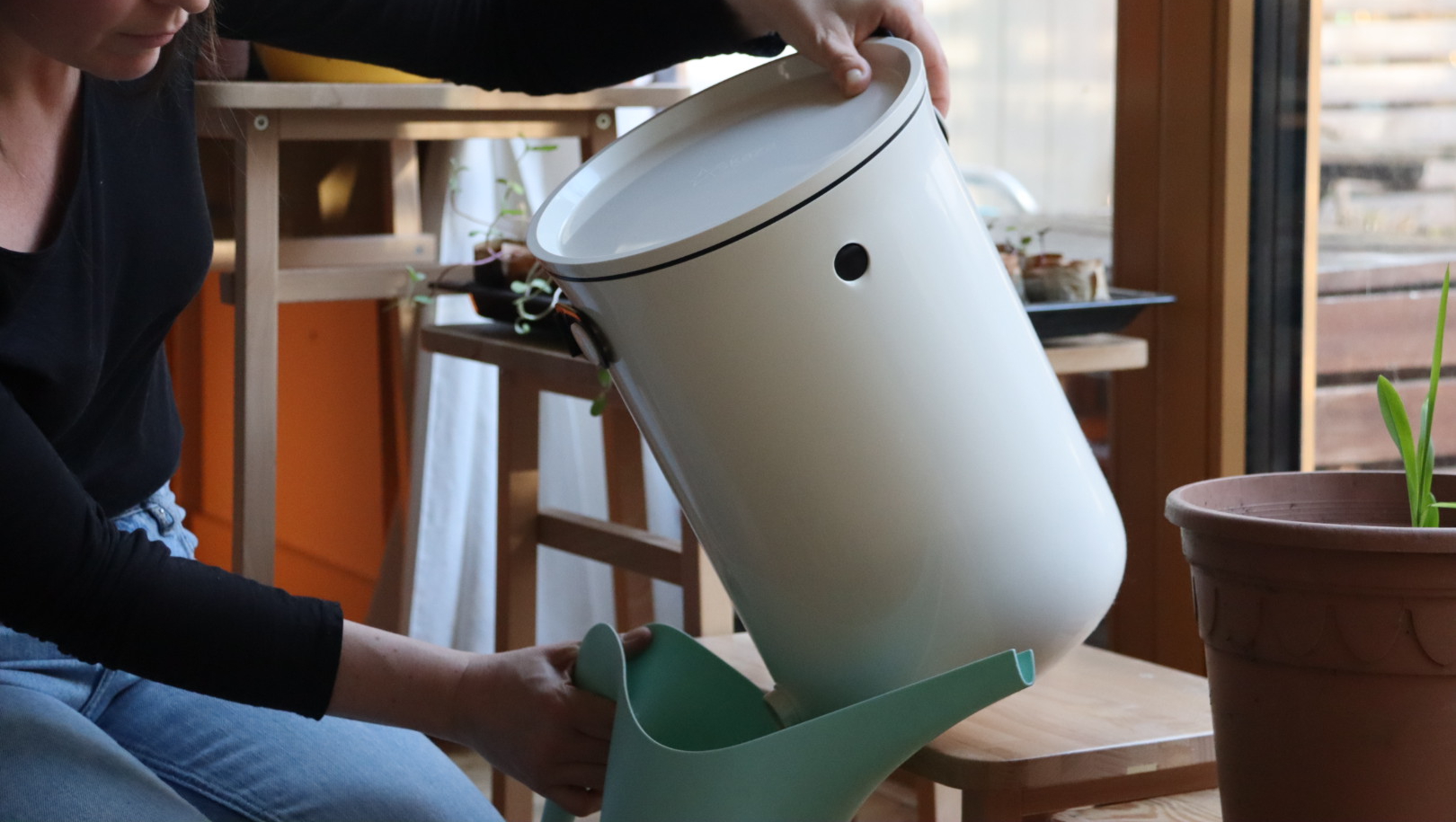
Bokashi Juice Storage
Now that you know all the basics about Bokashi liquid, it’s time to take a closer look at the Bokashi juice storage. So, how to store Bokashi liquid? Honestly, the best way to use this useful side product is to use it all at once. Considering the fact that it will be constantly produced, there is not much sense in storing it. As such, if you have any issues with clogged or smelly drains, use it right after you’ve poured it out of the Bokashi bin. The same goes for using it as a fertilizer; just dilute it first.
However, in case there is more Bokashi liquid produced than you can use at once, then you may want to have a solid Bokashi juice storage plan set in place. Using an airtight container and storing it in a dark cool place will do the trick. By following these simple guidelines regarding how to store Bokashi liquid, your Bokashi juice can be stored for up to a whole month.
For instance, you can use a bottle, just make sure to fill it up or squeeze (in case of a plastic one) the air out. Then place it in a dark cool place. Yes, your Bokashi juice storage solution can be that simple.
In case you notice that the Bokashi liquid has developed a very bad odor, it is no longer suitable for use. In that case, discard it. The same goes if any kind of molds (aside from white mold in smaller quantities) appear. In case a bit of white mold appears on top, you can simply remove it and still use the Bokashi liquid.

